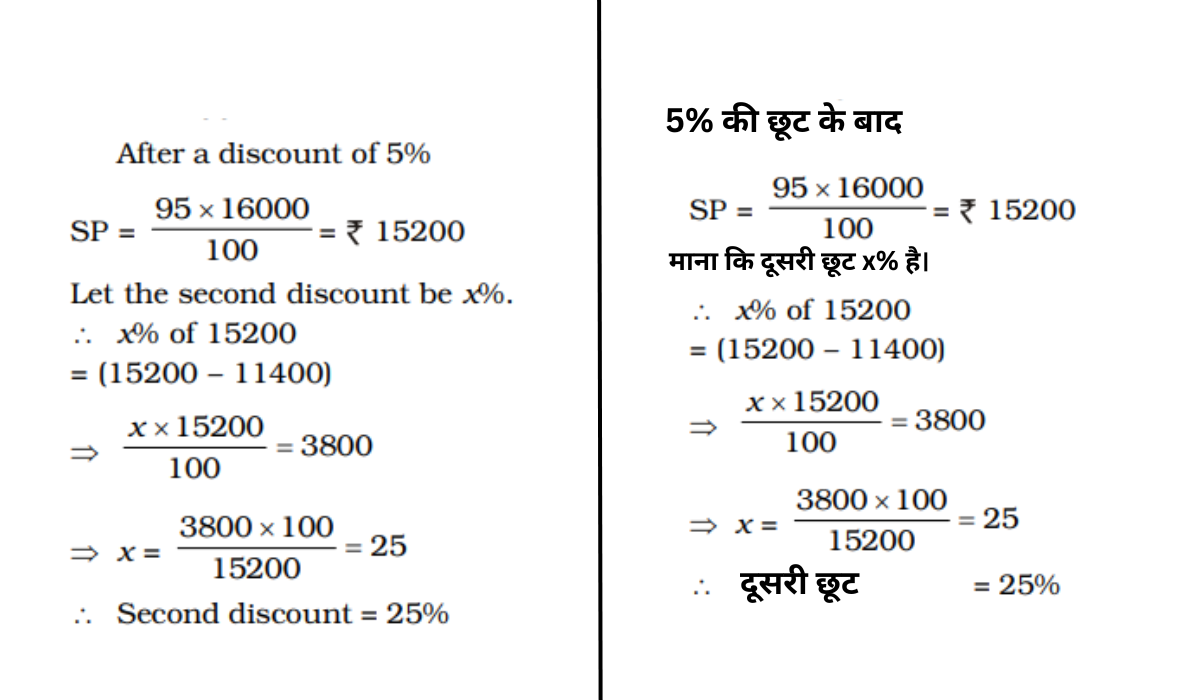Discount Questions with Solutions
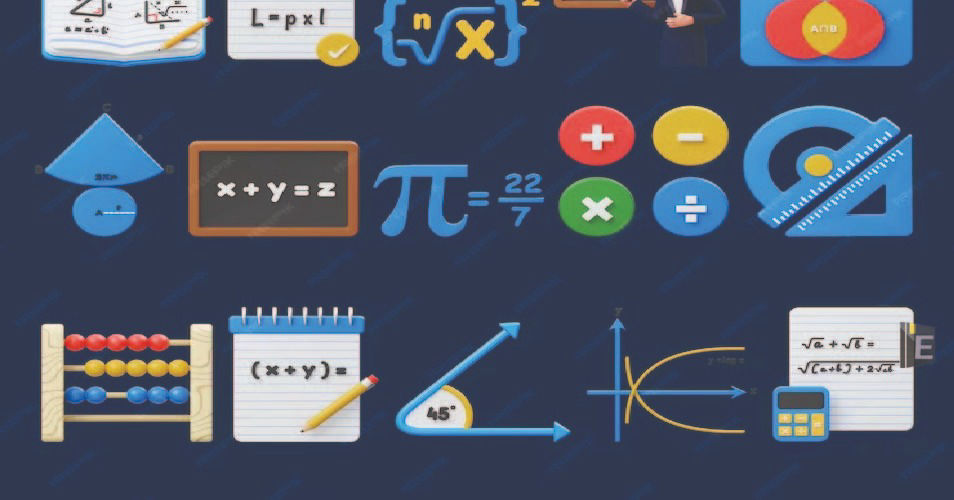
Welcome to our comprehensive blog on Discount Questions with Solutions, designed to enhance your understanding and mastery of one of the fundamental concepts in mathematics and commerce. Discounts play a crucial role in everyday transactions, influencing consumer choices, business strategies, and financial decision-making. Whether you're a student grappling with discount-related problems or a professional seeking to sharpen your skills, this blog serves as your go-to resource.
Discount Questions
In this article Discount Questions with Solutions, Our goal is to break down the complexities of discount calculations, offer step-by-step solutions, and provide practical insights to tackle a wide array of discount-related scenarios. From simple percentage discounts to more intricate cases involving multiple discounts, compound discounts, and comparison shopping, we'll cover it all.
Also, Read Latest Current Affairs Questions 2023: Current Affairs Today
Test your knowledge and stay ahead with our General Knowledge Mock Test and Current Affairs Mock Test– a perfect way to challenge yourself and stay updated!
Discount Questions with Solutions
Q : The printed price of a book is 320. A retailer pays 244.80 for it. He gets successive discounts of 10% and an another rate. His second rate is-
(A) 15%
(B) 16%
(C) 14%
(D) 12%
Correct Answer : A
Explanation :
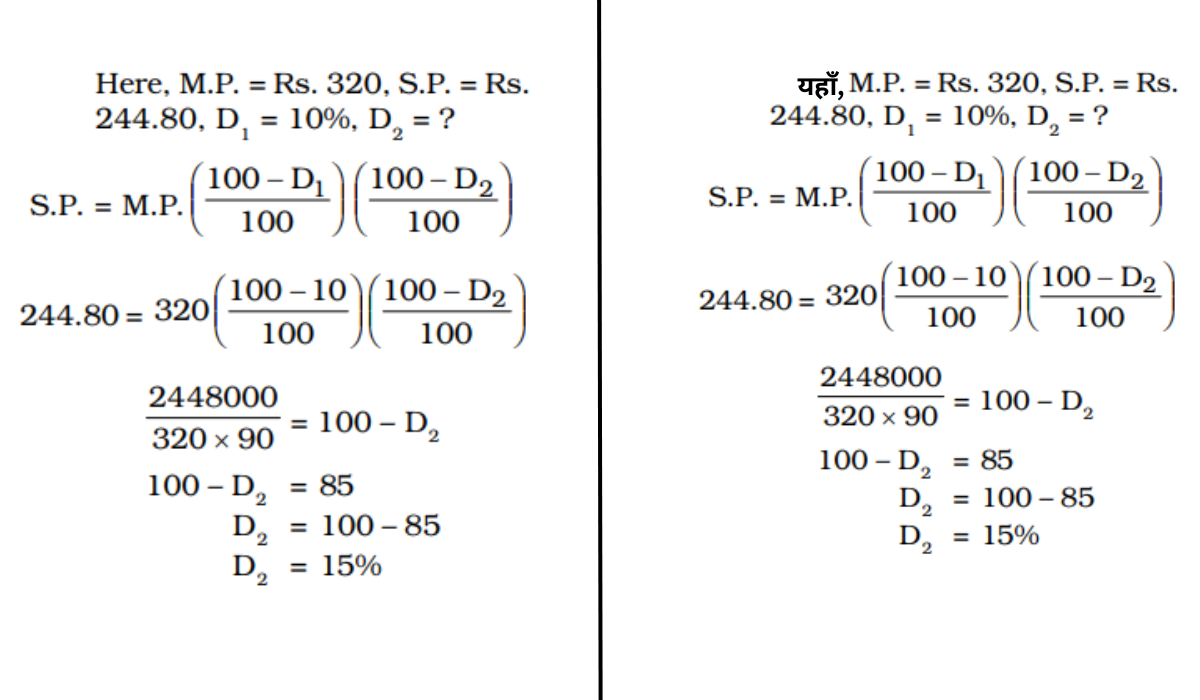
A sofa-set listed at ₹ 800 is sold to a retailer at successive discounts of 25% and 15% by the wholesaler. Then the cost price of the sofa-set for retailer is-
(A) 500
(B) 510
(C) 550
(D) 560
Correct Answer : B
Explanation :
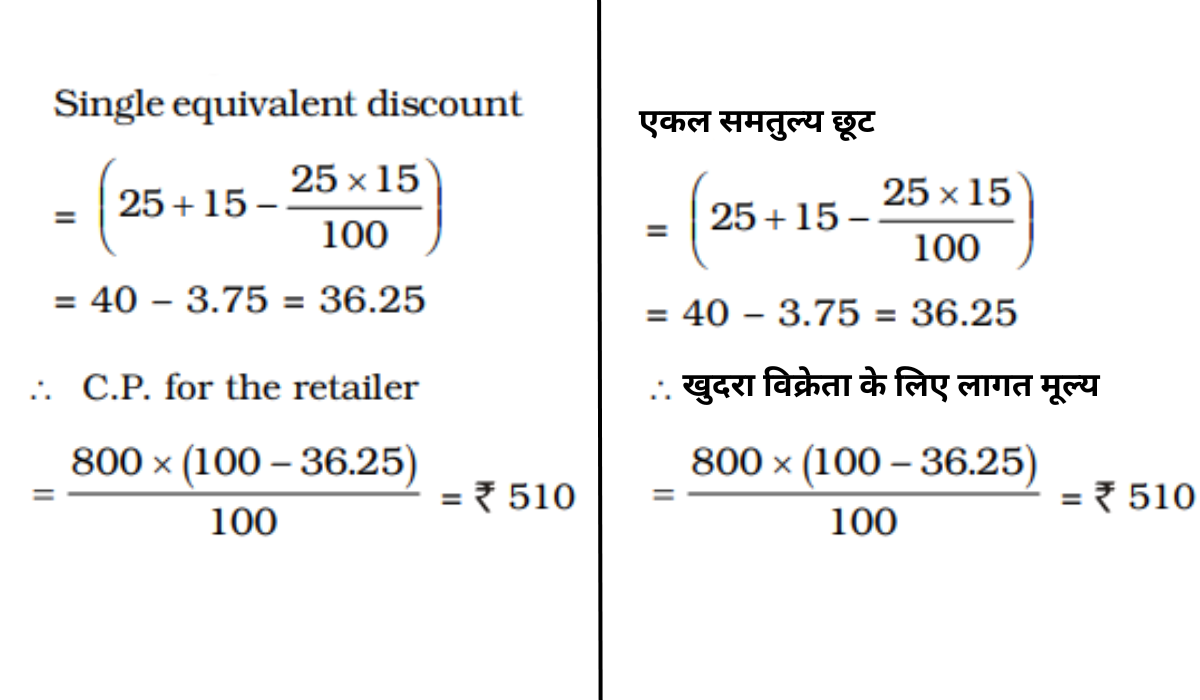
Alex sold his goods after announcing two successive discounts of 30% each. The effective discount altogether is-
(A) 52%
(B) 49%
(C) 50%
(D) 51%
Correct Answer : D
Explanation :
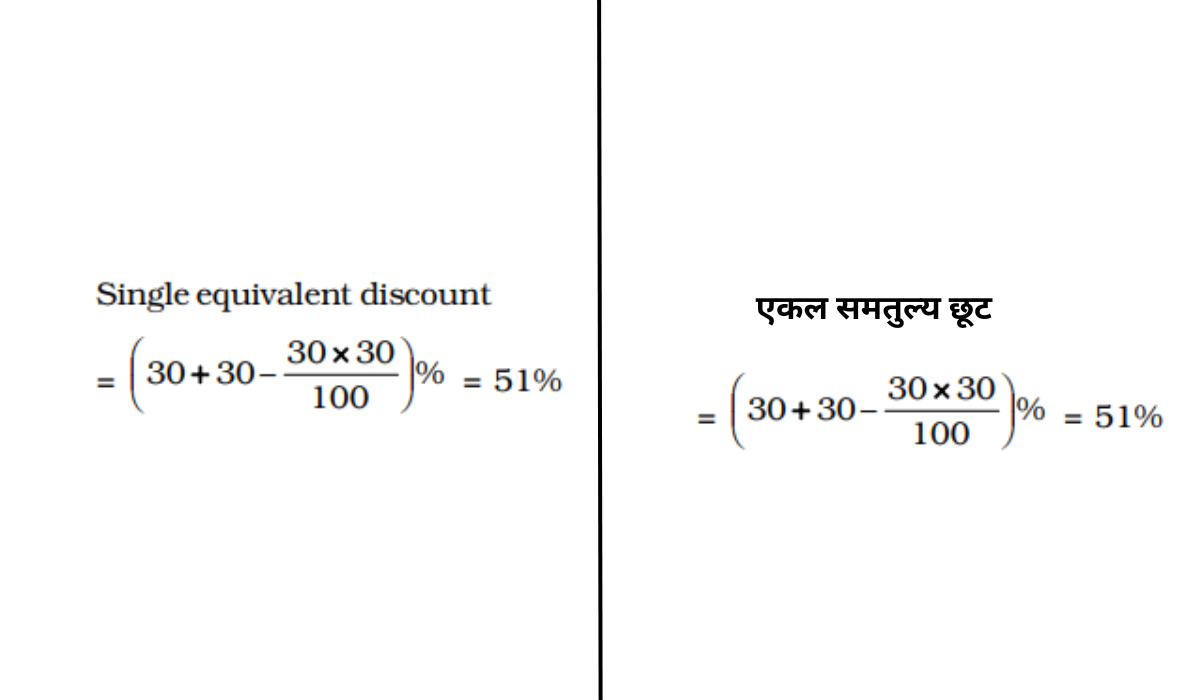
A dealer buys a table listed at ₹ 1,500 and gets successive discounts of 20% and 10%. He spends ₹ 20 on transportation and sells at a profit of 20%. Find the selling price of the table (in rupee).
(A) 1200
(B) 1230
(C) 1320
(D) 1080
Correct Answer : C
Explanation :
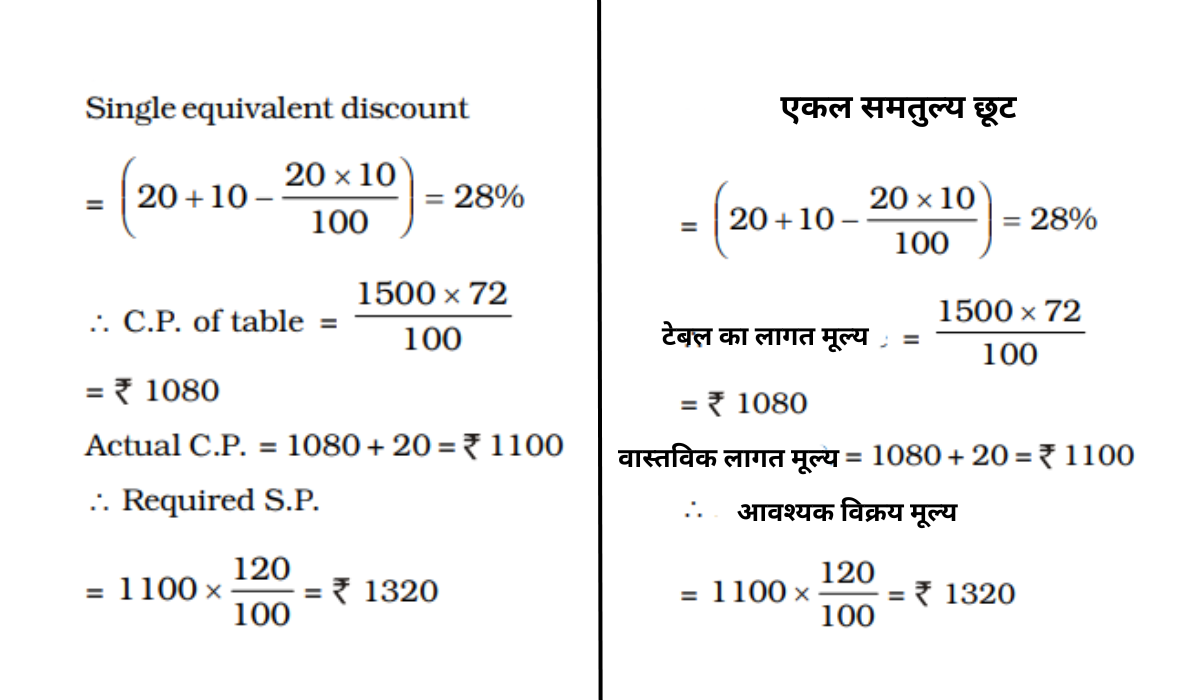
A dealer buys a table listed at Rs 1,500 and gets successive discounts of 20% and 10%. He spends Rs. 20 on transportation and sells it at a profit of 20%. The selling price of the table is
(A) Rs.1320
(B) Rs.1350
(C) Rs.1360
(D) Rs.1380
Correct Answer : A
Explanation :
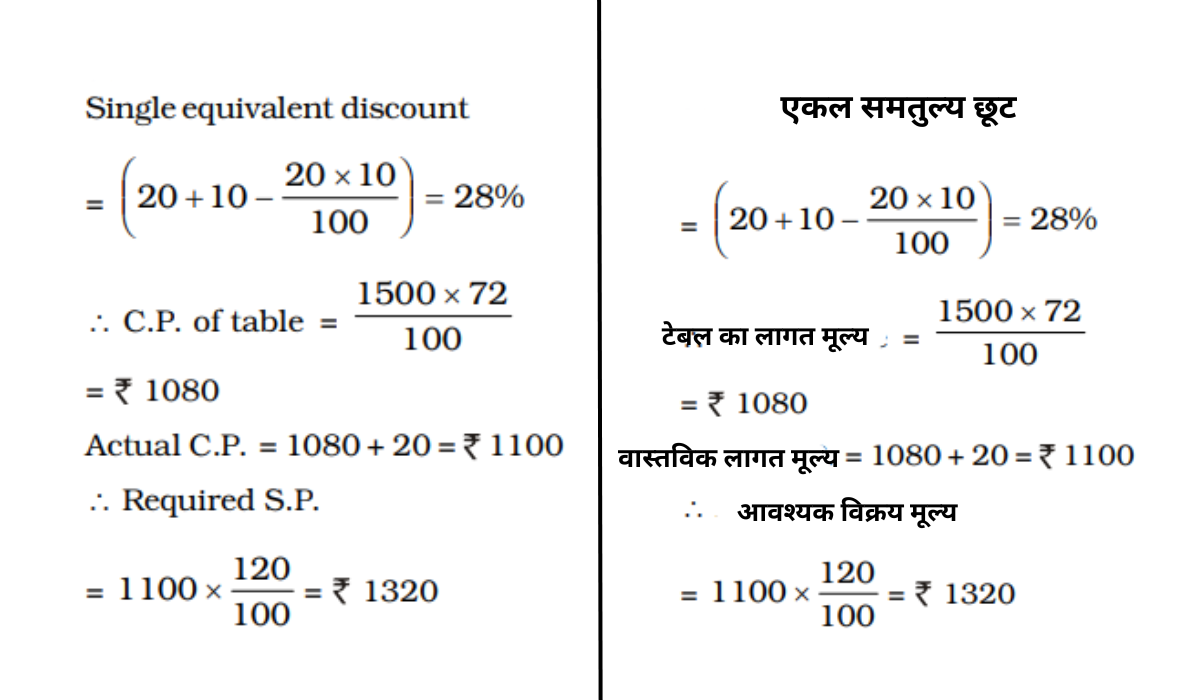
A shop keeper purchased a chair marked at ₹ 800, at two successive discounts of 10 % and 15% respectively. He spent ₹ 28 on transportation and sold the chair for ₹ 800. His gain percent is:
(A) 40 %
(B) 30 %
(C) 25 %
(D) 14 %
Correct Answer : C
Explanation :
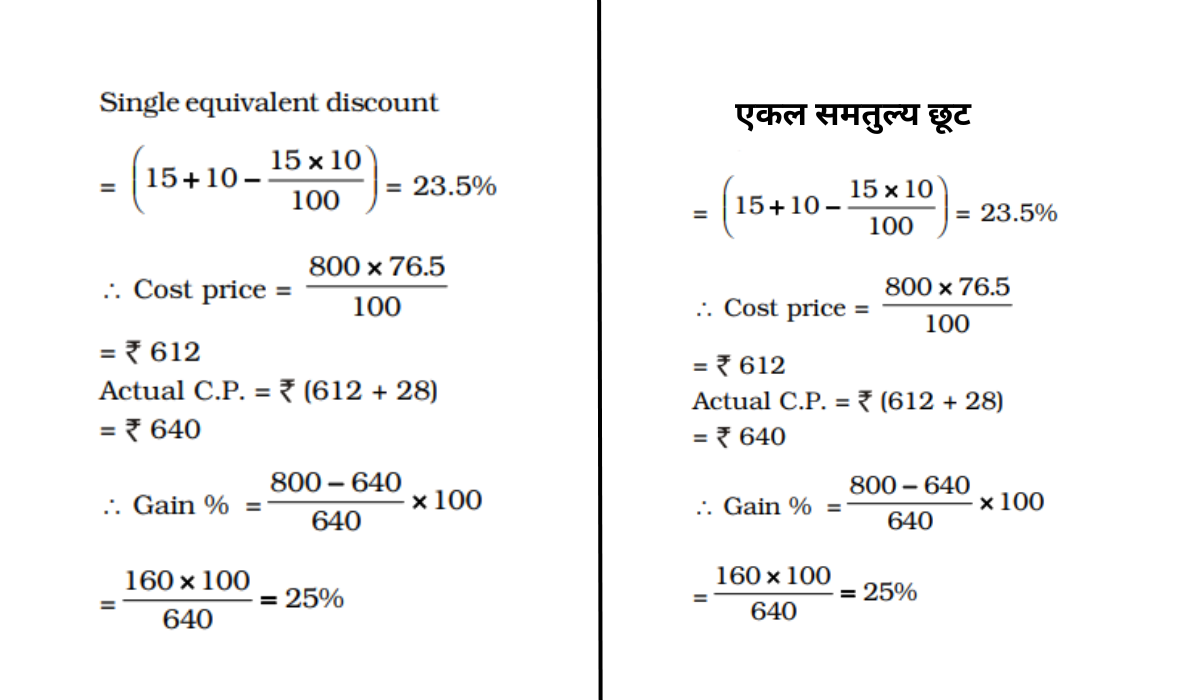
If on a marked price the difference of selling prices with a discount of 30% and two successive discounts of 20% and 10% is 72, then the marked price (in rupees) is
(A) 3,600
(B) 3,000
(C) 2,500
(D) 2,400
Correct Answer : A
Explanation :
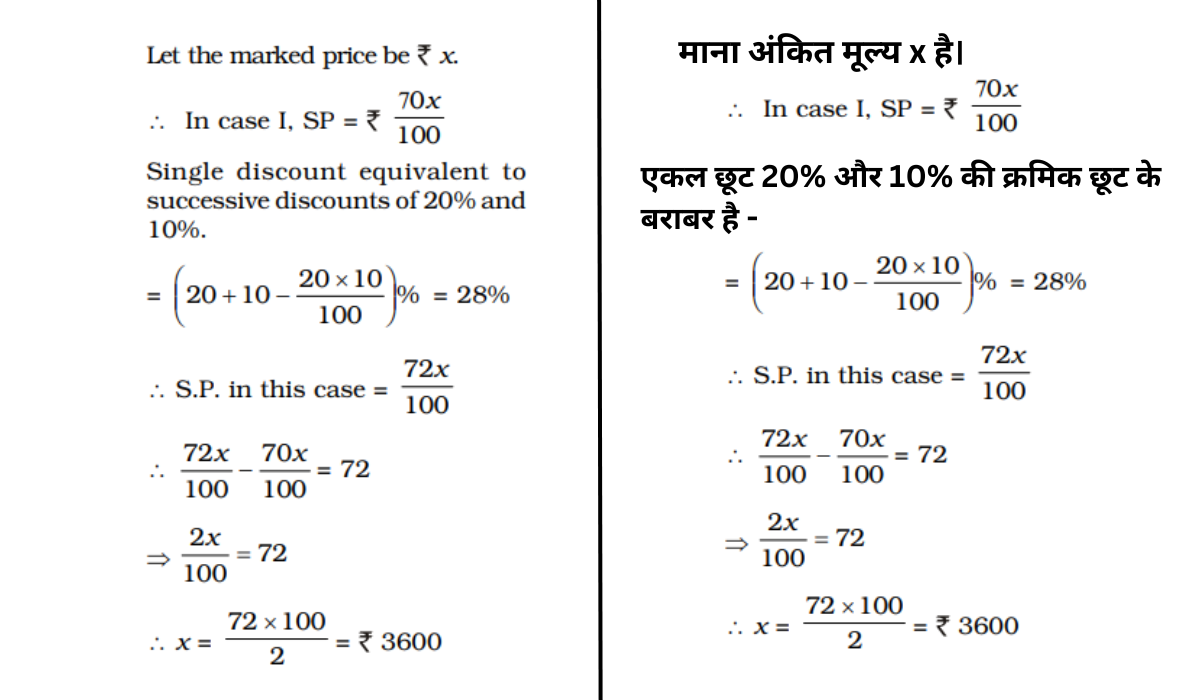
The difference between a discount of 30% on ₹ 2,000 and two successive discounts of 25% and 5% on the same amount is
(A) ₹ 25
(B) ₹ 40
(C) ₹ 30
(D) ₹ 35
Correct Answer : A
Explanation :
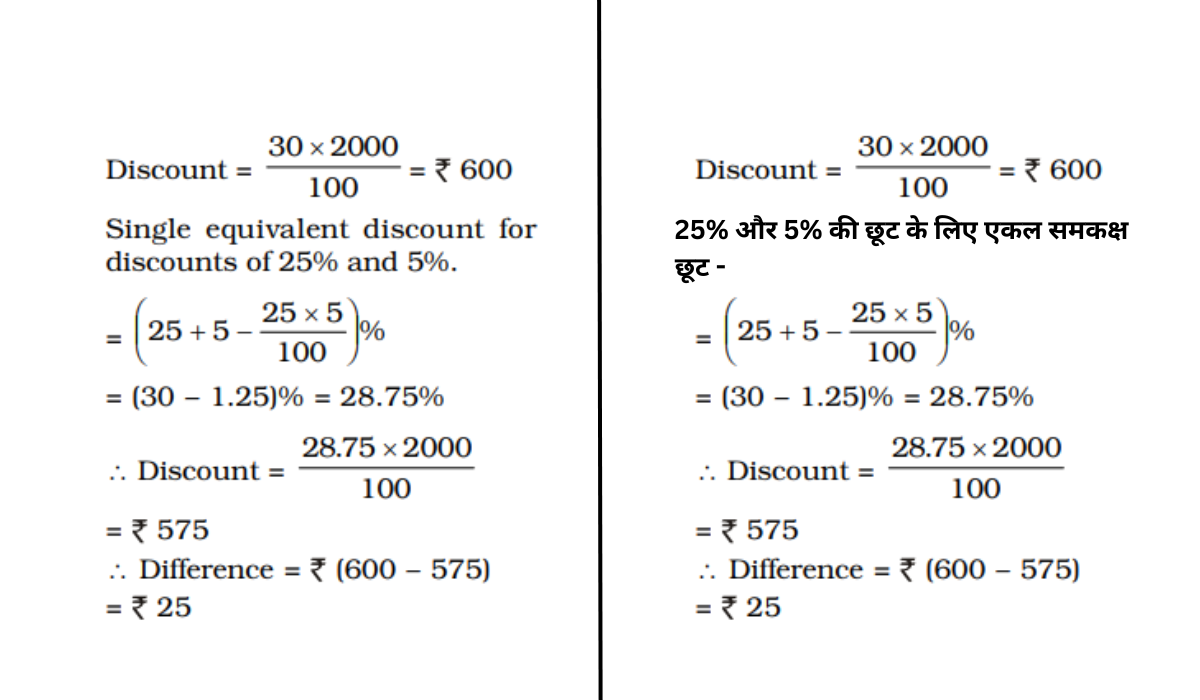
The difference between B a discount of 30% on ₹2,000 and two successive discounts of 25% and 5% on the same amount is
(A) ₹30
(B) ₹35
(C) ₹25
(D) ₹40
Correct Answer : C
Explanation :
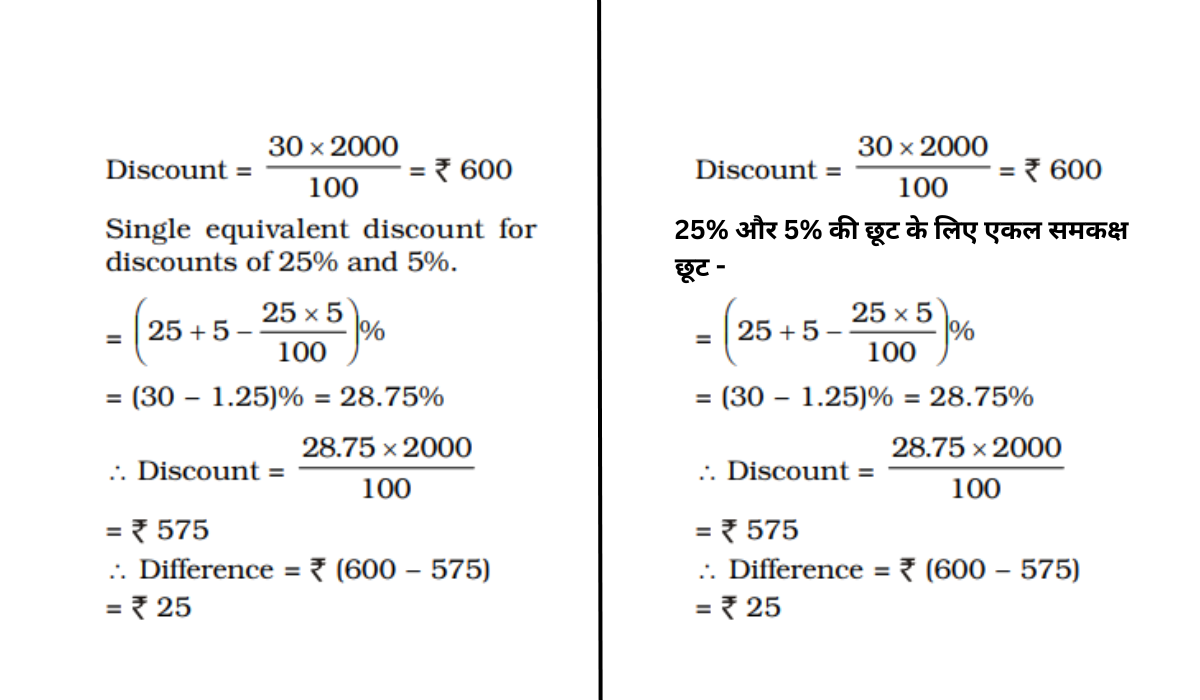
The marked price of a T.V. is ₹16,000. After two successive discounts it is sold for ₹11,400. If the first discount is 5%, then the rate of second discount is
(A) 15%
(B) 20%
(C) 30%
(D) 25%
Correct Answer : D
Explanation :
